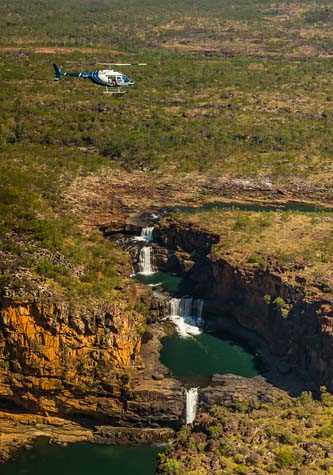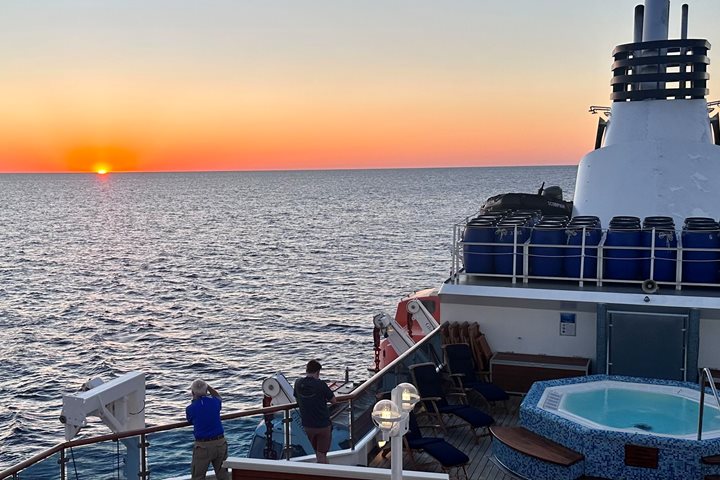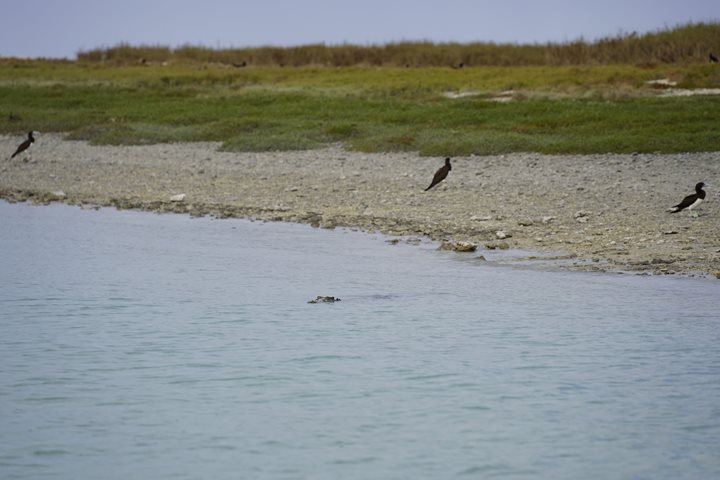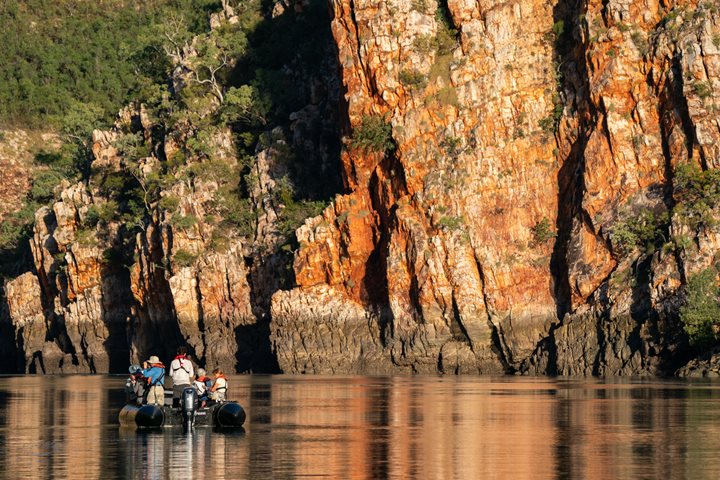At sunrise today the National Geographic Orion approaches the sandstone cliffs of Naturalist Island near the mouth of the Hunter River. Our plan for the day is to explore both by sea and air. The wind is calm. Wispy clouds paint the sky. It’s going to be a big day.
After breakfast two helicopters land on a nearby beach and begin scenic flights. Doors are off, the best way to fly.
Kimberley’s rugged landscape is absolutely breathtaking from the air. The coastline is carved by a maze of tidal channels guarded by mangrove forest and wetlands. This is saltwater crocodile country. Before landing high on the plateau for exploration and photo opportunities on the ground, the pilot circles Mitchell Falls, one of the most spectacular waterfalls in all of the Kimberley.
Meanwhile, back at sea level, the Zodiac fleet takes to the water to explore Porosus Creek, named after the saltwater crocodiles that inhabit the coastal wetland habitat. From the water, the mangrove forests are a maze of inlets and channels. Hidden among the prop roots and branches are a great variety of birds, including the brahiny kite, white-bellied sea eagles, and many different herons and egrets.
But, of course, it’s the crocs or the “salties,” that steal the show. There are many great sightings during both the morning and afternoon outings, including swimming crocs very close to the Zodiacs.
The day is capped off by one last helicopter over-flight to photograph the Zodiacs and National Geographic Orion in expedition mode. Conditions could not have been better, and magic happened. Indeed, for everyone that flew or explored by Zodiac it will take some time to come down from today’s exciting adventures.









